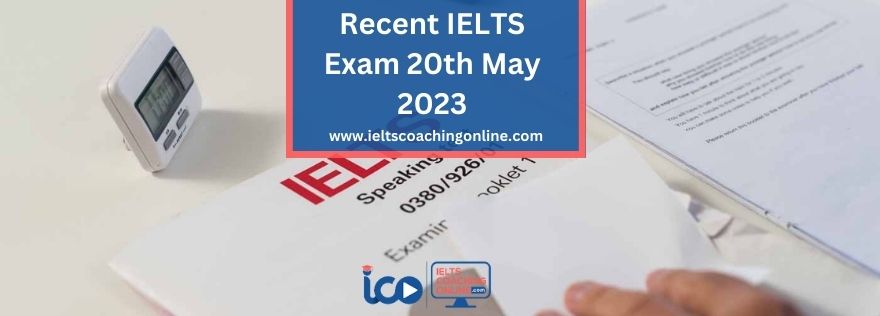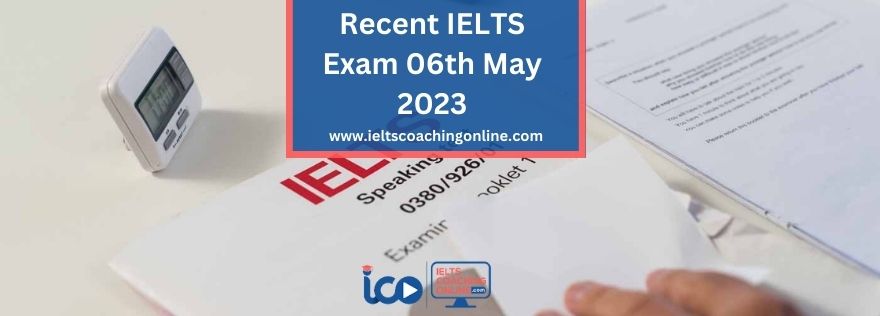Recent IELTS Exam 20th May 2023 India

Get ready to unveil the secrets of the recent IELTS exam 20th May 2023 India! The anticipation is over as we bring you the much-awaited answer key that holds the key to your success. Discover the correct answers for Listening, Reading, and Writing. Let’s dive in and conquer the IELTS together!
Recent IELTS Exam 20th May 2023 Reading Answers
Passage 1: Tunnels in London
Passage 2: Skyscraper Farming
Passage 2: Multitasking
1. KIND
2. SUBSTANCE
3. ACCIDENT
4. WARM
5. WARS
6. CLAY
7. TRUE/NG
8. FALSE
9. TRUE
10. NOT GIVEN
11. TRUE
12. FALSE
13. NG
14. TRUE
15. VII
16. XI
17. I
18. III
19. IV
20. VI
21. Erosion
22. Operating costs
23. Helicopters
24. B
25. A
26. A
27. C
28. B
29. E
30. F
32. D
33. B
34. D
35. A
36. E
37. E
38. email voice
39. prefrontal cortex
40. Group meetings
1. Monetary
2. Kitchen
3. Collection
4. Sound
5. Cities
6. Parent
7. urban centre
8. rooftop
9. august 16
10. ceremonies
11. b
12. d
13. a
14. c
15. .
16. f
17. e
18. b
19. d
20. a
21.
22.
23.
24. c
25. b
26. A
27.
28.
29.
30.
31. Artificial
32. Fossil
33. Fuel
Transportation
sculpture
Speed
Teachers
Trays
Cities
Youth
Recent IELTS Exam 20th May 2023 Writing Task1 Sample Answers
The table below shows the percentage of household and electronic Goods in New Zealand in 2002 and 2020. Summarise the information by selecting and reporting the main features and make comparisons where relevant.

The table provided showcases the proportion of electrical equipment utilized in households in New Zealand during two specific years, namely 2002 and 2020. Upon closer examination of the chart, it becomes evident that the consumption of high-tech devices has witnessed a significant increase over the given time frame. However, it is worth noting that while most electronic goods experienced an upward trend, the opposite was true for video recorders.
In 2002, approximately 97% of New Zealand households owned a washing machine, which was considerably higher than the figures for color TVs (95%) and dishwashers (45%). Subsequently, all three items observed a surge in usage, with dishwashers demonstrating the most substantial increase, accounting for 10% compared to washing machines and color TVs. The growth in ownership for these items remained relatively modest, ranging from 98% to 99%.
Moving on to 2020, it becomes apparent that the usage of computers, cell phones, and digital cameras has witnessed a significant rise, reflecting the rapid development of our daily lives. Conversely, video recorders experienced a notable decline from 75% in 2002 to 60% in 2020. In contrast, a reverse pattern emerged for computers, cell phones, and digital cameras, with increases of 18%, 60%, and 38% respectively. Among these three items, the digital camera experienced the most rapid growth.
Overall, the data presented in the table sheds light on the changing landscape of electrical equipment usage in New Zealand households over the span of these two years.
Recent IELTS Exam 20th May 2023 Writing Task2 Sample Answers
The crime rate nowadays is decreasing compared to the past due to advances in technology that can prevent and solve crimes. To what extent do you agree or disagree?
Sample 1:
It’s a widely held belief that technological advances have driven down the crime rate compared to the past. While this may be true in certain aspects, I don’t believe it’s entirely accurate to say that this is a one-way cause and effect. After all, advances in technology can only do so much to prevent and solve crimes, and a decrease in the crime rate could be caused by numerous things such as improved law enforcement, public education, and socio-economic development.
That said, technology has certainly played a significant role in reducing crime in many cities around the world. For example, CCTV cameras have become an indispensable tool for crime prevention and detection, allowing police to monitor areas that are more prone to criminal activity. Advances in forensics have also improved the ability to collect, analyze, and keep track of evidence that can be used to catch criminals and bring them to justice. In addition, technological advancements have made it easier for law enforcement officers to follow leads and take action, resulting in higher conviction rates and faster resolution of cases.
All in all, while advances in technology have certainly helped reduce crime in some cities, it is not the sole factor in the decrease of crime. Other factors such as improved law enforcement, education, and socio-economic development also contribute to a decrease in criminal activity. Even with technology, there is no one-size-fits-all solution; each city requires its own tailored solution based on its particular set of circumstances.
Sample 2:
The prevalence of high-tech surveillance systems, connected with the fact that crime rates have been decreasing, suggests that technology has been instrumental in preventing and solving crimes. To what extent is this true?
There is no doubt that advances in technology have been effective in helping to promote the prevention and solving of crimes. CCTV cameras have become increasingly popular in public spaces as a means of deterring criminals, as well as providing physical evidence in the event of a criminal act. Furthermore, progress in facial recognition and forensic science have made it much easier for law enforcement officers to identify suspects and build cases for prosecution.
That being said, while it is certainly true that technology has had an impact in crime prevention and resolution, it is by no means the only factor. Improved law enforcement strategies, increased public education, and socio-economic improvement are also playing a role in reducing the crime rate. All of these variables interact with one another and often require specific context-based solutions. For example, communities have implemented police patrols alongside CCTV cameras in order to shape behavior and deter crime in certain areas.
In sum, while advances in technology contribute to a decrease in the crime rate, the full picture is much more complex and requires consideration of a variety of factors that impact crime prevention and resolution.
Sample 3:
It is widely believed that advances in technology have caused a decrease in the crime rate in recent years. While this claim has some degree of truth, it is not the only factor responsible for the decrease in crime.
Technology has certainly been beneficial in helping catch criminals, as well as deterring them from committing criminal acts in the first place. For example, CCTV cameras are much more prevalent now and can be used as evidence in the event of a crime. Advances in digital evidence gathering and analysis have also made it easier for law enforcement officers to track suspects and build a case that can be brought to court.
However, it is not accurate to say that technology is the single cause for the decrease in the crime rate. Factors such as improved law enforcement and public education can have a significant effect in deterring criminal activity. Socio-economic improvement can also have an impact, as people have access to better opportunities and alternatives to criminal activity. All these variables interact with one another and require specific context-based solutions.
In conclusion, there is no single cause for the decrease in the crime rate. Technology advances have certainly had an impact and have helped improve crime prevention and resolution, but they are by no means the only factor. All of the variables mentioned above must be taken into consideration in order to get an accurate picture of the true cause of the decrease in crime.






There’s certainly a lot to find out about this subject. I like all of the points you have made.
This really answered my problem, thank you!
I regard something genuinely special in this web site.
I gotta bookmark this website it seems extremely helpful handy